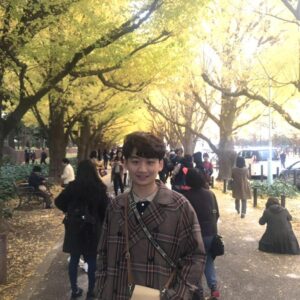
IDA 2024 Silver Product Design Winner
What sparked the idea for your award-winning project, and how did it take shape?
The idea stemmed from the critical mental health challenges faced by first responders due to their high-stress, high-risk work environments. While researching stress-relief solutions, I found that existing psychological support systems were often ineffective for firefighters and emergency personnel. Inspired by a nurse who used low-frequency music to relieve stress during COVID-19, I explored vibroacoustic therapy as a potential solution. Through interviews with first responders and multiple prototypes, the concept evolved into a wearable vest that seamlessly integrates stress relief into their daily routines.
How does your personal style or philosophy influence your designs?
I believe that industrial design should merge functionality, human needs, and emotional well-being. My approach is deeply rooted in human-centered design, ensuring that products not only perform efficiently but also enhance user comfort, experience, and identity. For this project, I prioritized discretion and integration, making sure the vest aligns with firefighters’ existing gear rather than appearing as an added burden.
What was the most challenging aspect of this project, and how did you tackle it?
One major challenge was ensuring the vibration panels were effective yet unobtrusive. Early prototypes were too bulky and visually obvious, which was a concern since firefighters prioritize their professional image and prefer gear that blends seamlessly with their uniform. Through user testing and iterative refinements, I optimized the size, placement, and material flexibility of the vibration panels, creating a discreet, ergonomic solution that maintains full mobility.
Winning an International Design Award is a huge achievement—what does this recognition mean to you?
It’s an incredible honor and a validation of human-centered design in addressing real-world challenges. This recognition not only affirms the impact of this project but also opens doors for further development and collaborations. It motivates me to continue designing solutions that merge technology, well-being, and industry needs.
Can you share some insights into your creative process? Do you follow a structured approach or let inspiration lead the way?
I follow a research-driven, iterative process. Every project starts with problem identification and deep research, often through interviews and real-world observations. I then move into sketching, rapid prototyping, and material exploration. Throughout the process, user feedback is key, allowing me to refine the design for optimal usability and effectiveness.
Did this project push you to explore new materials, techniques, or technologies?
Yes, it introduced me to vibroacoustic therapy and low-frequency vibration technology, which had primarily been used in medical and therapeutic settings. I had to explore how to integrate it into a wearable format, considering power sources, flexibility, and placement for maximum effectiveness.
What role does sustainability play in your design work?
Sustainability is about both material choices and long-term usability. For this project, I focused on durability, modularity, and easy maintenance. The removable vibration panels extend the vest’s lifespan, allowing parts to be replaced or upgraded without discarding the entire product. This minimizes waste while ensuring the product remains functional over time.
What advice would you give to aspiring designers looking to make an impact in their field?
Always start with the problem, not the product. Design is most impactful when it directly addresses human needs. Be open to feedback, embrace iteration, and challenge traditional solutions. Also, don’t be afraid to blend disciplines—this project combined industrial design, technology, and psychology, leading to a truly innovative outcome.
How do you balance function, innovation, and aesthetics in your designs?
Functionality always comes first, but aesthetics and innovation should work in harmony. For this project, it was crucial to maintain a professional and discreet aesthetic while delivering a new approach to stress relief. The vest’s design blends seamlessly into firefighters’ existing gear, ensuring that innovation enhances function without compromising visual or ergonomic integrity.
What’s next for you? Are there any exciting projects or collaborations in the works?
I’m exploring how this technology can be adapted for other high-stress professions, such as medical workers, military personnel, and high-performance athletes. Additionally, I’m interested in collaborating with researchers and engineers to refine the technology further, making it more accessible, adaptable, and effective across various industries.